 When the German offensive in the west began on 10 May 1940, nobody on the Allied side thought that the channel ports were in any immediate danger. That all changed after the German breakthrough at Sedan on 14 May,
When the German offensive in the west began on 10 May 1940, nobody on the Allied side thought that the channel ports were in any immediate danger. That all changed after the German breakthrough at Sedan on 14 May, and the dash to the coast that followed. When Guderian’s Panzers reached the mouth of the Somme at Abbeville,
and the dash to the coast that followed. When Guderian’s Panzers reached the mouth of the Somme at Abbeville,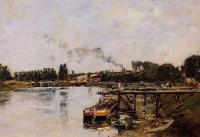
German tanks were less than forty miles south of Boulogne. The nearest strong Allied
formations were sixty miles to the east, still trying to hold the line east of Lille and preparing for a
 counterattack, which it was hoped would break through the German lines and restore
counterattack, which it was hoped would break through the German lines and restore  the situation (Battle of Arras, 21 May 1940).
the situation (Battle of Arras, 21 May 1940).Luckily for the Allies, the Germans had advanced much faster than they had believed possible, and Guderian’s tanks remained static throughout 21 May, while the High Command decided whether to send 
Above are maybe the only plastic troops of French ww2 soldiers, You could cut off the heads and replace with kepi heads to have legionaaires.
them north to capture the channel ports, or south to attack the new French line forming on the Somme. The British used this time well. On the morning of 22 May the 20th Guards Brigade (one battalion each from the Irish and Welsh Guards)
On the morning of 22 May the 20th Guards Brigade (one battalion each from the Irish and Welsh Guards)
was taken to Boulogne by sea, escorted by the destroyers HMS Whitshed and HMSVimiera. This force was placed under the direct command of General Edmund Ironside, the Chief of the I
placed under the direct command of General Edmund Ironside, the Chief of the I mperial General Staff,
mperial General Staff, partly because communications between the coast and Lord Gort, the commander of the BEF, were now unreliable. The British found two battalions of French infantry in the
partly because communications between the coast and Lord Gort, the commander of the BEF, were now unreliable. The British found two battalions of French infantry in the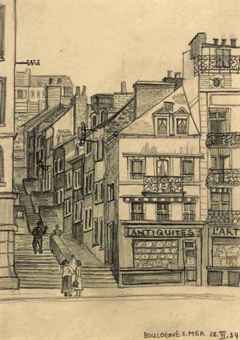 town, under the command of General Lanquetot, as well as a number of other troops who had been
town, under the command of General Lanquetot, as well as a number of other troops who had been 
employed on labour duties behind the front lines and had found their way to the coast. Together the British and French had between 8,000-9,000 men in Boulogne, but the town had not been prepared for defence, and the troops lacked anti-tank weapons – the British had part of one anti-tank battery,
defence, and the troops lacked anti-tank weapons – the British had part of one anti-tank battery,
September 1939: french R-35 tanks (5th BCC) in the Warndt forrest, during the short-lived offensive in the Sarre under the command of général Louis Faury. The only resistance the French "Saar Offensive"
the Sarre under the command of général Louis Faury. The only resistance the French "Saar Offensive" ran into was in the form of German antipersonnel mines and woodlands. The Heer hastily evacuated civilians from the border hinterlands and hunkered down behind the Siegfried Line.
ran into was in the form of German antipersonnel mines and woodlands. The Heer hastily evacuated civilians from the border hinterlands and hunkered down behind the Siegfried Line.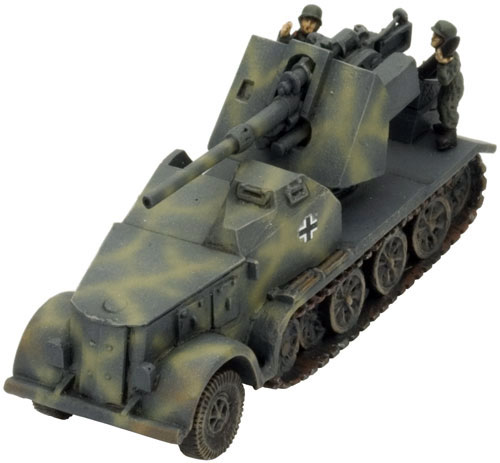
The problem was that général Gamelin simply did not believed in the offensive and accepted such an operation for propaganda purpose, then decided to stop it after a few days. they stopped as soon as they ran into real German resistance, and then watched the German's play soccer the next morning
 (below ) the French had a
(below ) the French had a 
small number of tanks.
French General Charles de Gaulle’s 4th Armored Division made the only Allied counterattack on the Meuse bridgehead. The French tanks, especially the char and the Somua,
were superior one-on-one to the German Panzerkampfwagen pzkpfw I and II panzers. But the Germans required their tanks to have radios to allow maneuver as a group, and the French used tanks as infantry support. De Gaulle’s attack was too little too late.
But the Germans required their tanks to have radios to allow maneuver as a group, and the French used tanks as infantry support. De Gaulle’s attack was too little too late.

Above are maybe the only plastic troops of French ww2 soldiers, You could cut off the heads and replace with kepi heads to have legionaaires.
them north to capture the channel ports, or south to attack the new French line forming on the Somme. The British used this time well.
 On the morning of 22 May the 20th Guards Brigade (one battalion each from the Irish and Welsh Guards)
On the morning of 22 May the 20th Guards Brigade (one battalion each from the Irish and Welsh Guards) was taken to Boulogne by sea, escorted by the destroyers HMS Whitshed and HMSVimiera. This force was
 mperial General Staff,
mperial General Staff, partly because communications between the coast and Lord Gort, the commander of the BEF, were now unreliable. The British found two battalions of French infantry in the
partly because communications between the coast and Lord Gort, the commander of the BEF, were now unreliable. The British found two battalions of French infantry in the town, under the command of General Lanquetot, as well as a number of other troops who had been
town, under the command of General Lanquetot, as well as a number of other troops who had been 
employed on labour duties behind the front lines and had found their way to the coast. Together the British and French had between 8,000-9,000 men in Boulogne, but the town had not been prepared for
 defence, and the troops lacked anti-tank weapons – the British had part of one anti-tank battery,
defence, and the troops lacked anti-tank weapons – the British had part of one anti-tank battery,September 1939: french R-35 tanks (5th BCC) in the Warndt forrest, during the short-lived offensive in
 the Sarre under the command of général Louis Faury. The only resistance the French "Saar Offensive"
the Sarre under the command of général Louis Faury. The only resistance the French "Saar Offensive" ran into was in the form of German antipersonnel mines and woodlands. The Heer hastily evacuated civilians from the border hinterlands and hunkered down behind the Siegfried Line.
ran into was in the form of German antipersonnel mines and woodlands. The Heer hastily evacuated civilians from the border hinterlands and hunkered down behind the Siegfried Line.
The problem was that général Gamelin simply did not believed in the offensive and accepted such an operation for propaganda purpose, then decided to stop it after a few days. they stopped as soon as they ran into real German resistance, and then watched the German's play soccer the next morning
 (below ) the French had a
(below ) the French had a small number of tanks.
French General Charles de Gaulle’s 4th Armored Division made the only Allied counterattack on the Meuse bridgehead. The French tanks, especially the char and the Somua,

were superior one-on-one to the German Panzerkampfwagen pzkpfw I and II panzers.

On the same day the Germans finally began to move north. II Panzer Division had been given the job of capturing Boulogne. During 22 May they reached the southern part of Boulogne, (above Zurribulli)where  they encountered unexpectedly determined resistance. General Walther K. Nehring,
they encountered unexpectedly determined resistance. General Walther K. Nehring,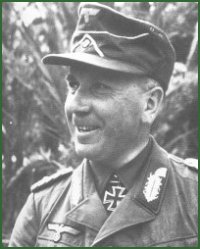 Guderian’s chief of staff, rather unfairly believed this to be due to British leadership. The performance of the French garrison
Guderian’s chief of staff, rather unfairly believed this to be due to British leadership. The performance of the French garrison over the next few days would suggest that this was not true, but this was certainly the first serious clash between Guderian’s men and the British.
over the next few days would suggest that this was not true, but this was certainly the first serious clash between Guderian’s men and the British.
 they encountered unexpectedly determined resistance. General Walther K. Nehring,
they encountered unexpectedly determined resistance. General Walther K. Nehring, Guderian’s chief of staff, rather unfairly believed this to be due to British leadership. The performance of the French garrison
Guderian’s chief of staff, rather unfairly believed this to be due to British leadership. The performance of the French garrison
On 23 May II Panzer Division began a much more determined attack on Boulogne. The British had already begun to plan for a possible evacuation and that morning 200 seaman and marines were sent over on the  destroyer HMS Vimy, to organise the port. This was a particularly dangerous task, for German troops had
destroyer HMS Vimy, to organise the port. This was a particularly dangerous task, for German troops had 
reached within small arms range of the harbour area. The danger was clearly illustrated later in the day – the destroyers HMS Keith and HMS Whitshed were sent into the harbour, where Captain D. J. R. Simson of the Keith was killed and the captain of the Vimy mortally wounded. Later on the
where Captain D. J. R. Simson of the Keith was killed and the captain of the Vimy mortally wounded. Later on the  afternoon of 23 May the British finally decided to evacuate their troops from Boulogne. Three more destroyers
afternoon of 23 May the British finally decided to evacuate their troops from Boulogne. Three more destroyers  (HMS Vimiera, HMS Venomous and HMS Venetia) were sent over to take part in the operation, with HMS Wild Swan following close behind.
(HMS Vimiera, HMS Venomous and HMS Venetia) were sent over to take part in the operation, with HMS Wild Swan following close behind.

reached within small arms range of the harbour area. The danger was clearly illustrated later in the day – the destroyers HMS Keith and HMS Whitshed were sent into the harbour,
 afternoon of 23 May the British finally decided to evacuate their troops from Boulogne. Three more destroyers
afternoon of 23 May the British finally decided to evacuate their troops from Boulogne. Three more destroyers  (HMS Vimiera, HMS Venomous and HMS Venetia) were sent over to take part in the operation, with HMS Wild Swan following close behind.
(HMS Vimiera, HMS Venomous and HMS Venetia) were sent over to take part in the operation, with HMS Wild Swan following close behind.They arrived at Boulogne at 6.30pm, just after a heavy German air raid that General Nehring claimed disabled three destroyers. The new ships were met by HMS Whitshedoutside the harbour. Her commander, E. R. Conder, was now the senior naval officer present. He sent a message to Admiral Ramsey, the overall commander of the
commander, E. R. Conder, was now the senior naval officer present. He sent a message to Admiral Ramsey, the overall commander of the  evacuations, reporting that he would not risk entering the port without air support. Fifty minutes later, at 7.20pm, with RAF fighters overhead the British flotilla began to enter the port.
evacuations, reporting that he would not risk entering the port without air support. Fifty minutes later, at 7.20pm, with RAF fighters overhead the British flotilla began to enter the port.
 commander, E. R. Conder, was now the senior naval officer present. He sent a message to Admiral Ramsey, the overall commander of the
commander, E. R. Conder, was now the senior naval officer present. He sent a message to Admiral Ramsey, the overall commander of the  evacuations, reporting that he would not risk entering the port without air support. Fifty minutes later, at 7.20pm, with RAF fighters overhead the British flotilla began to enter the port.
evacuations, reporting that he would not risk entering the port without air support. Fifty minutes later, at 7.20pm, with RAF fighters overhead the British flotilla began to enter the port.
Whitshed and Vimy went in first. They were each able to take on around 1,000 men, before withdrawing at 8.20pm. They were then followed in by the Wild Swan, Venomousand Venetia. HMS Venetia soon 
became the only British destroyer to be seriously damaged. Her captain was wounded and she was forced to back out of the port. All three ships became involved in a close range ship-to-shore battle, atta cking German tanks with their quick firing naval guns, aiming over open sights at enemies only a few hundred
cking German tanks with their quick firing naval guns, aiming over open sights at enemies only a few hundred 
yards away. The situation was made worse when the Germans captured the French coastal gun batteries largely
intact, and turned them on the British ships. Despite this, at 9.30 theWild Swan and the Venomous left port with 900 men on board between them.

became the only British destroyer to be seriously damaged. Her captain was wounded and she was forced to back out of the port. All three ships became involved in a close range ship-to-shore battle, atta
 cking German tanks with their quick firing naval guns, aiming over open sights at enemies only a few hundred
cking German tanks with their quick firing naval guns, aiming over open sights at enemies only a few hundred yards away. The situation was made worse when the Germans captured the French coastal gun batteries largely

intact, and turned them on the British ships. Despite this, at 9.30 theWild Swan and the Venomous left port with 900 men on board between them.

By this point 2,900 men had been evacuated, but there were still 2,200 British soldiers in Boulogne. At 10.30pm an eighth destroyer, HMS Windsor reached the port, and was able to evacuate 600 men, amongst them many of the wounded and a naval demolition party that had first been sent in on 22 May. Finally, in the early hours of 24 May HMSVimiera made the final trip into Boulogne. By now the fighting
amongst them many of the wounded and a naval demolition party that had first been sent in on 22 May. Finally, in the early hours of 24 May HMSVimiera made the final trip into Boulogne. By now the fighting 
To understand something of the fighting in the area visit The War Museum, situated in a green park opposite the town hall in calais, served during World War II as a command post for the Navy for the port of Calais and a transmission centre for the entire northern region of west France. As a member of the association "La Route 39/45," the War Museum offers various rooms where objects are exhibited - uniforms, weapons and other miscellaneous documents. During your visit you will discover through this unique collection of history of the town of Calais and its region from September 1939 until the liberation of the city in 1944.
had died down for the night, and by 2.45 she had been able to take 1,300 men on board. A total of 4,360
men were rescued. Unfortunately a second destroyer, HMS Wessex, had failed to arrive, and so 300 men of the Welsh guard had to be left behind.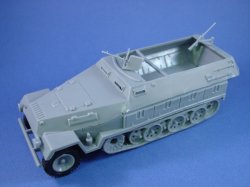
 amongst them many of the wounded and a naval demolition party that had first been sent in on 22 May. Finally, in the early hours of 24 May HMSVimiera made the final trip into Boulogne. By now the fighting
amongst them many of the wounded and a naval demolition party that had first been sent in on 22 May. Finally, in the early hours of 24 May HMSVimiera made the final trip into Boulogne. By now the fighting 
To understand something of the fighting in the area visit The War Museum, situated in a green park opposite the town hall in calais, served during World War II as a command post for the Navy for the port of Calais and a transmission centre for the entire northern region of west France. As a member of the association "La Route 39/45," the War Museum offers various rooms where objects are exhibited - uniforms, weapons and other miscellaneous documents. During your visit you will discover through this unique collection of history of the town of Calais and its region from September 1939 until the liberation of the city in 1944.

had died down for the night, and by 2.45 she had been able to take 1,300 men on board. A total of 4,360

men were rescued. Unfortunately a second destroyer, HMS Wessex, had failed to arrive, and so 300 men of the Welsh guard had to be left behind.

On the morning of 24 May the French garrison still held the old citadel, 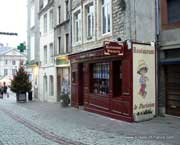 and was determined to fight on, protected by the 30 foot walls of the citadel. The Germans carried out a head-
and was determined to fight on, protected by the 30 foot walls of the citadel. The Germans carried out a head-
on attack. Using siege ladders, and supported by concentrated artillery fire, flame throwers and close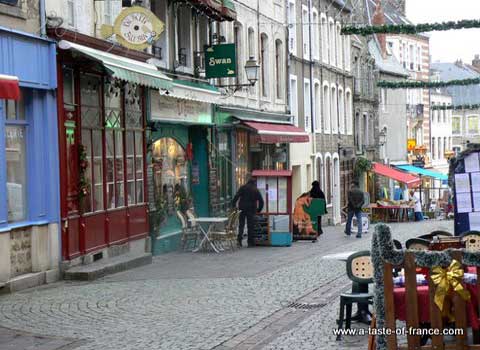
range fire from anti-aircraft guns,The Guards defended Boulogne for a while and were then withdrawn by orders from the U.K. While this was going on there was serious fighting in Calais.
The Rifle Brigade, the 60th Rifles, and the Queen Victoria's Rifles, with a battalion of British tanks and 1,000 Frenchmen, in all about four thousand strong, defended Calais to the last. The British Brigadier was given an hour to surrender. He spurned the offer, and four days of intense street fighting passed before silence reigned over Calais, which marked the end of a memorable resistance. Only 30 unwounded survivors were brought off by the Navy, and we do not know the fate of their comrades. Their sacrifice, however, was not in vain. At least two armored divisions, which otherwise would have been turned against the British Expeditionary Force, had to be sent to overcome them. They have added another page to the glories of the light divisions, and the time gained enabled the Graveline water lines to be flooded and to be held by the French troops.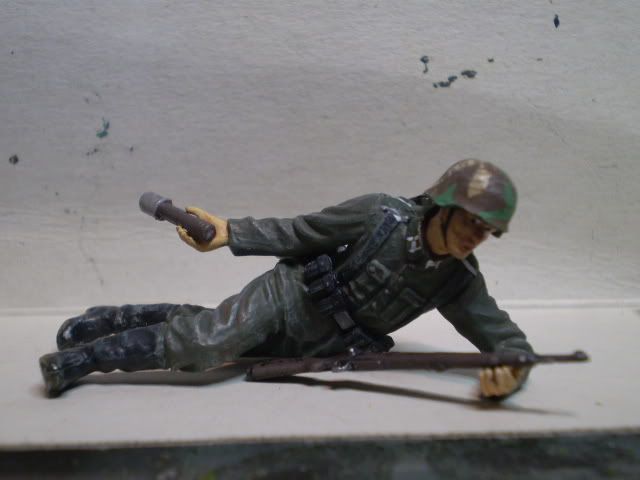
Most British troops who made it to Dunkirk said that if the Belgian army had not thrown away their weapons and had held the line or at least attempted to hold it then the Krauts would have been stopped. My Grandfather a veteran of the Khyber pass and Dunkirk nearly spat if you mentioned Belguim. This was not an old Soldiers story as the same evidence was produced in the book A History of the Second world war.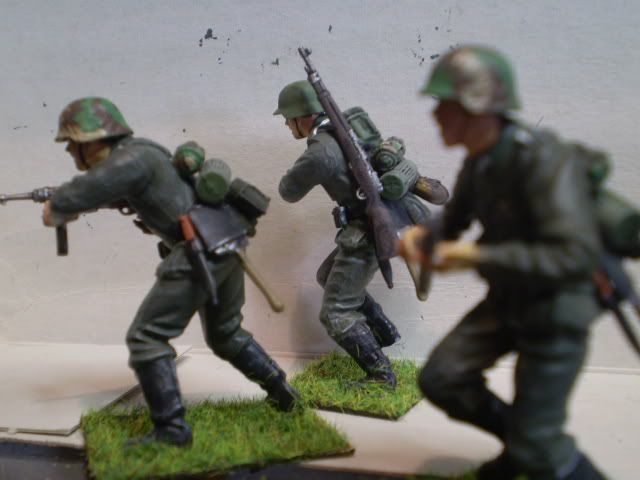
Belgium declared its neutrality and refused to allow the British Expeditionary Force to enter the country. The BEF defied the Belgian order, but had no effect. German paratroopers landed directly on top of the main defensive line at Fort Eban Emael and used flame-throwers to force the Fort to capitulate. Belgium surrendered on May 27.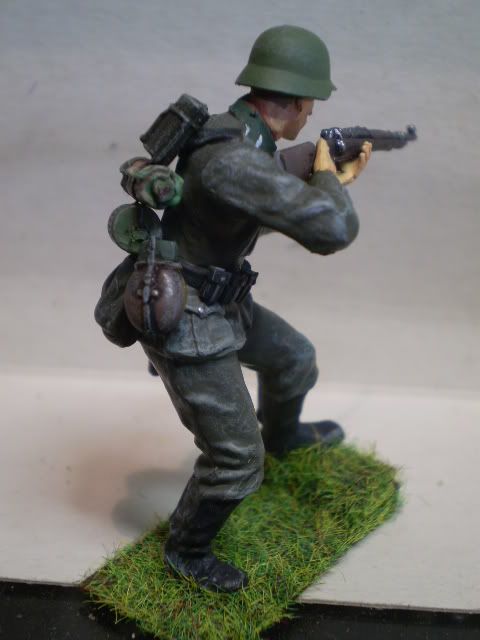
by the end of the day the Germans had captured the citadel. On the next day (25 May) the remaining garrison finally surrendered. The Germans captured two generals and 5,000
On the next day (25 May) the remaining garrison finally surrendered. The Germans captured two generals and 5,000  Allied troops, most of them French. While not as famous as the defence of Calais, which was being conducted at
Allied troops, most of them French. While not as famous as the defence of Calais, which was being conducted at  almost the same time, the three day defence of Boulogne played a part in delayed the German advance
almost the same time, the three day defence of Boulogne played a part in delayed the German advance
 towards Dunkirk, and gave the British and French time to consolidate their defensive positions west of Dunkir
towards Dunkirk, and gave the British and French time to consolidate their defensive positions west of Dunkir
 General Gerd von Rundstedt had doubts about the agressive tactics of Heinz Guderian and argued that his tanks should halt until infantry
General Gerd von Rundstedt had doubts about the agressive tactics of Heinz Guderian and argued that his tanks should halt until infantry  divisions could catch up so that a conventional assault could be made on Allied troops. Adolf Hitler agreed and this decision stopped Guderian cutting off the escape of the British and French troops from Dunkirk. k.
divisions could catch up so that a conventional assault could be made on Allied troops. Adolf Hitler agreed and this decision stopped Guderian cutting off the escape of the British and French troops from Dunkirk. k.
 and was determined to fight on, protected by the 30 foot walls of the citadel. The Germans carried out a head-
and was determined to fight on, protected by the 30 foot walls of the citadel. The Germans carried out a head-
on attack. Using siege ladders, and supported by concentrated artillery fire, flame throwers and close

range fire from anti-aircraft guns,The Guards defended Boulogne for a while and were then withdrawn by orders from the U.K. While this was going on there was serious fighting in Calais.

The Rifle Brigade, the 60th Rifles, and the Queen Victoria's Rifles, with a battalion of British tanks and 1,000 Frenchmen, in all about four thousand strong, defended Calais to the last. The British Brigadier was given an hour to surrender. He spurned the offer, and four days of intense street fighting passed before silence reigned over Calais, which marked the end of a memorable resistance. Only 30 unwounded survivors were brought off by the Navy, and we do not know the fate of their comrades. Their sacrifice, however, was not in vain. At least two armored divisions, which otherwise would have been turned against the British Expeditionary Force, had to be sent to overcome them. They have added another page to the glories of the light divisions, and the time gained enabled the Graveline water lines to be flooded and to be held by the French troops.

Most British troops who made it to Dunkirk said that if the Belgian army had not thrown away their weapons and had held the line or at least attempted to hold it then the Krauts would have been stopped. My Grandfather a veteran of the Khyber pass and Dunkirk nearly spat if you mentioned Belguim. This was not an old Soldiers story as the same evidence was produced in the book A History of the Second world war.

Belgium declared its neutrality and refused to allow the British Expeditionary Force to enter the country. The BEF defied the Belgian order, but had no effect. German paratroopers landed directly on top of the main defensive line at Fort Eban Emael and used flame-throwers to force the Fort to capitulate. Belgium surrendered on May 27.

by the end of the day the Germans had captured the citadel.
 On the next day (25 May) the remaining garrison finally surrendered. The Germans captured two generals and 5,000
On the next day (25 May) the remaining garrison finally surrendered. The Germans captured two generals and 5,000  Allied troops, most of them French. While not as famous as the defence of Calais, which was being conducted at
Allied troops, most of them French. While not as famous as the defence of Calais, which was being conducted at  almost the same time, the three day defence of Boulogne played a part in delayed the German advance
almost the same time, the three day defence of Boulogne played a part in delayed the German advance towards Dunkirk, and gave the British and French time to consolidate their defensive positions west of Dunkir
towards Dunkirk, and gave the British and French time to consolidate their defensive positions west of Dunkir  divisions could catch up so that a conventional assault could be made on Allied troops. Adolf Hitler agreed and this decision stopped Guderian cutting off the escape of the British and French troops from Dunkirk.
divisions could catch up so that a conventional assault could be made on Allied troops. Adolf Hitler agreed and this decision stopped Guderian cutting off the escape of the British and French troops from Dunkirk. The position of the B. E.F had now become critical As a result of a most skillfully conducted retreat and German errors, the bulk of the British Forces reached the Dunkirk bridgehead. The peril facing the British nation was now suddenly and universally perceived. On May 26, "Operation Dynamo "--the evacuation from Dunkirk began. The seas remained absolutely calm. The Royal Air Force--bitterly maligned at the time by the Army--fought 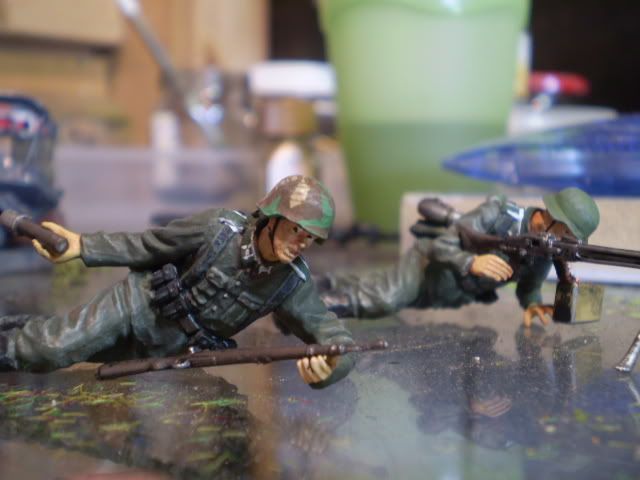 vehemently to deny the enemy the total air supremacy which would have wrecked the operation. At the outset, it was hoped that 45,000 men might be evacuated; in the event, over 338,000 Allied troops reached
vehemently to deny the enemy the total air supremacy which would have wrecked the operation. At the outset, it was hoped that 45,000 men might be evacuated; in the event, over 338,000 Allied troops reached  England, including 26,000 French soldiers. On June 4, Churchill reported to the House of Com
England, including 26,000 French soldiers. On June 4, Churchill reported to the House of Com mons, seeking to check the mood of national euphoria and relief at the unexpected deliverance, and to make a clear appeal to the United States.
mons, seeking to check the mood of national euphoria and relief at the unexpected deliverance, and to make a clear appeal to the United States.

The defeat cost the French dear, the war years were a time of shortages, a time when things ran out. Because of German demand for French agricultural produce and the British blockade, shortages of many
 vehemently to deny the enemy the total air supremacy which would have wrecked the operation. At the outset, it was hoped that 45,000 men might be evacuated; in the event, over 338,000 Allied troops reached
vehemently to deny the enemy the total air supremacy which would have wrecked the operation. At the outset, it was hoped that 45,000 men might be evacuated; in the event, over 338,000 Allied troops reached  England, including 26,000 French soldiers. On June 4, Churchill reported to the House of Com
England, including 26,000 French soldiers. On June 4, Churchill reported to the House of Com mons, seeking to check the mood of national euphoria and relief at the unexpected deliverance, and to make a clear appeal to the United States.
mons, seeking to check the mood of national euphoria and relief at the unexpected deliverance, and to make a clear appeal to the United States. 
The defeat cost the French dear, the war years were a time of shortages, a time when things ran out. Because of German demand for French agricultural produce and the British blockade, shortages of many

essential foodstuffs became acute as early as the summer of 1940. Rationning of essential goods like bread, sugar, butter, chesse, eggs, fruit, meat, and coffee was gradually introduced throughout France from the autumn of 1940 until the spring 1941 in response to growing shortages. Chocolate and fresh fish were added to the list of rationned goods in July 1941, with tripe and fresh vegetables joining them in October that same year. Rationning in France did not end fully u
In 1940 the Royal Air Force bombed Channel ports to head off the threat of invasion. From 1941 it attacked the German battlecruisers Scharnhorst and Gneisenau in Brest harbour. On 3-4 March 1942, RAF Stirling bombers targeted the Renault works at Boulogne-Billancourt,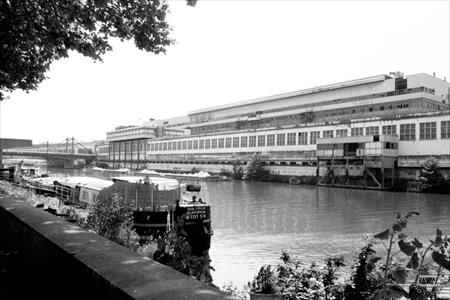 (After France surrendered in 1940, Louis Renault refused to produce tanks for Nazi Germany, which took
(After France surrendered in 1940, Louis Renault refused to produce tanks for Nazi Germany, which took  control of his factories. He produced lorries for the German occupiers instead. The Provisional Government of the French Republic accused him of collabrating with the German occupiers and had him
control of his factories. He produced lorries for the German occupiers instead. The Provisional Government of the French Republic accused him of collabrating with the German occupiers and had him 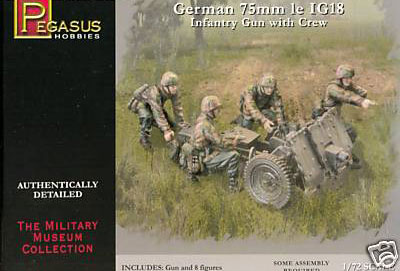 arrested during the liberation of France in 1944. He died in prison before having prepared his defence. An autopsy later showed that his neck had been broken, suggesting that he was murdered. His industrial assets were seized by the provisional government of France. The Renault factories became a public
arrested during the liberation of France in 1944. He died in prison before having prepared his defence. An autopsy later showed that his neck had been broken, suggesting that he was murdered. His industrial assets were seized by the provisional government of France. The Renault factories became a public 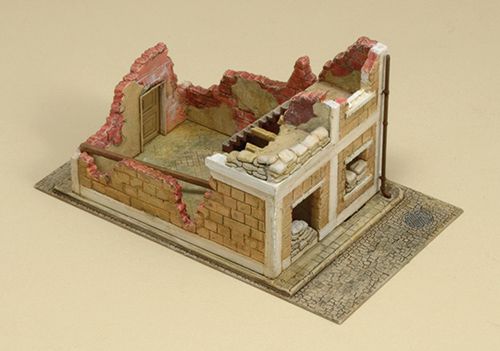
 control of his factories. He produced lorries for the German occupiers instead. The Provisional Government of the French Republic accused him of collabrating with the German occupiers and had him
control of his factories. He produced lorries for the German occupiers instead. The Provisional Government of the French Republic accused him of collabrating with the German occupiers and had him  arrested during the liberation of France in 1944. He died in prison before having prepared his defence. An autopsy later showed that his neck had been broken, suggesting that he was murdered. His industrial assets were seized by the provisional government of France. The Renault factories became a public
arrested during the liberation of France in 1944. He died in prison before having prepared his defence. An autopsy later showed that his neck had been broken, suggesting that he was murdered. His industrial assets were seized by the provisional government of France. The Renault factories became a public 
industry known as Régie Nationale des Usines Renault. )which was known to be supplying German forces 3. The operation was remarkable for using the ‘Gee' navigational aid for the first time – and for killing over 370 civilians, more than in any raid hitherto on Germany.In 1940 the Royal Air Force bombed Channel ports to head off the threat of
370 civilians, more than in any raid hitherto on Germany.In 1940 the Royal Air Force bombed Channel ports to head off the threat of 
 370 civilians, more than in any raid hitherto on Germany.In 1940 the Royal Air Force bombed Channel ports to head off the threat of
370 civilians, more than in any raid hitherto on Germany.In 1940 the Royal Air Force bombed Channel ports to head off the threat of 
invasion. From 1941 it attacked the German battlecruisers Scharnhorst and Gneisenau in Brest harbour. ports to head off the threat of invasion.

italians could be easily converted into French infantry fighting for Boulogne in the desperate battle with the Germans.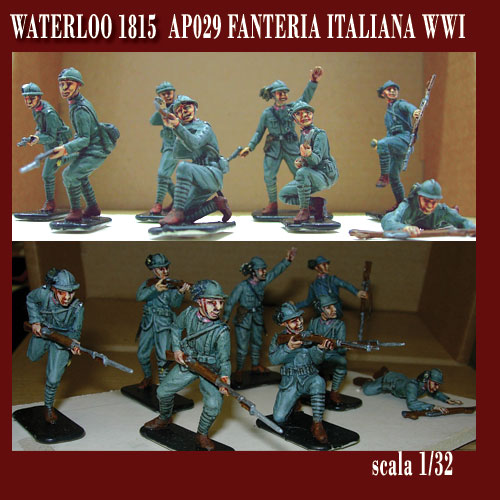

Even though large tracts of Europe and many old and famous States have fallen or may fall into the grip of the Gestapo and all the odious apparatus of Nazi rule, we shall not flag or fail. We shall go on to the 

end, we shall fight in France, we shall fight on the seas and oceans, we shall fight with growing confidence and growing strength in the air, we shall defend our Island, whatever the cost may be,

we shall fight on the beaches, we shall fight on the landing grounds, we shall fight in the fields and in the streets, we shall fight in the hills; we shall never surrender, and even if, which I do not for a moment  believe, this Island or a large part of it were subjugated and starving, then our Empire beyond the seas, armed and
believe, this Island or a large part of it were subjugated and starving, then our Empire beyond the seas, armed and  guarded by the British Fleet, would carry on the struggle, until, in God's good time, the New World, with all its power and might, steps forth to the rescue and the liberation of the old.
guarded by the British Fleet, would carry on the struggle, until, in God's good time, the New World, with all its power and might, steps forth to the rescue and the liberation of the old.
 believe, this Island or a large part of it were subjugated and starving, then our Empire beyond the seas, armed and
believe, this Island or a large part of it were subjugated and starving, then our Empire beyond the seas, armed and  guarded by the British Fleet, would carry on the struggle, until, in God's good time, the New World, with all its power and might, steps forth to the rescue and the liberation of the old.
guarded by the British Fleet, would carry on the struggle, until, in God's good time, the New World, with all its power and might, steps forth to the rescue and the liberation of the old.
There are no sunbeds in sight, but this picture is clear evidence, as if any were needed, that the German aptitude for bagging the best sunbathing spots goes back a long way.
There’s barely room to move on this beach near Boulogne, and any Britons trying to find a spot wouldn’t have been terribly welcome.
The year was 1940 and this rare colour photo shows a unit of Hitler’s army relaxing as they waited to see if they would be called on to cross the Channel and attack
It was taken on June 6, two days after Churchill told Great Britain – standing alone
after the collapse of France – ‘We shall fight them on the beaches…’
As it turned out, the invasion was called off after the Luftwaffe’s failure to defeat the RAF in the Battle of Britain during the exceptionally hot summer of that year.
But the picture offers a glimpse of how relaxed and confident these crack troops were after their unstoppable Blitzkrieg through the Low Countries and France.
One or two even seem to have packed Das Speedos in their kit bags in preparation for
the excursion to the seaside. (Though look closely and it appears that some clearly
didn’t.)
And is the figure in bright red trunks a shapely collaborator in bikini bottoms?
Some are drying out after a swim. Combat gear is scattered across the beach and their rifles are stacked in neat pyramids.
They are infantrymen from the 1st Gebirgsjäger (Mountain Huntsmen) Division and
were preparing to take part in Operation Sea Lion, which would have seen them streaming across the Channel in landing craft.
Further up the coast, British and French troops were fighting for their lives at Dunkirk.
The extraordinary snapshot is one of a series taken by an unnamed officer. Others show the same men marching along country lanes and through rubble-strewn towns.
The officer seems to have dumped his box of negatives four years later as he fled Paris. They were discovered by photographer Marcel Gesgon but he simply filed them away.
Now his son Alain, a Paris-based historian, has had them printed to coincide with the
70th anniversary of the planned invasion.
He said: ‘These young men were simply enjoying the sun in a newly-created outpost of the Third Reich.
Many of were in their teens or early 20s but they had swept all before them so far, and seemingly had nothing to fear.’
Might some still be alive today? Unlikely, Mr Gesgon said. Some time after this sun-kissed day, the 1st Gebirgsjäger was posted to the freezing, blood-soaked Russian front.

No comments:
Post a Comment